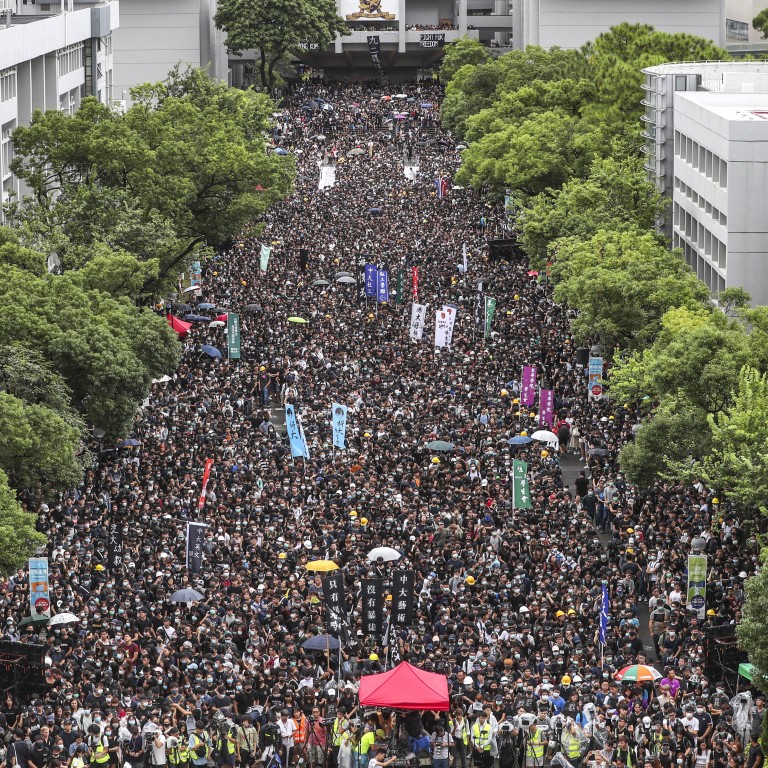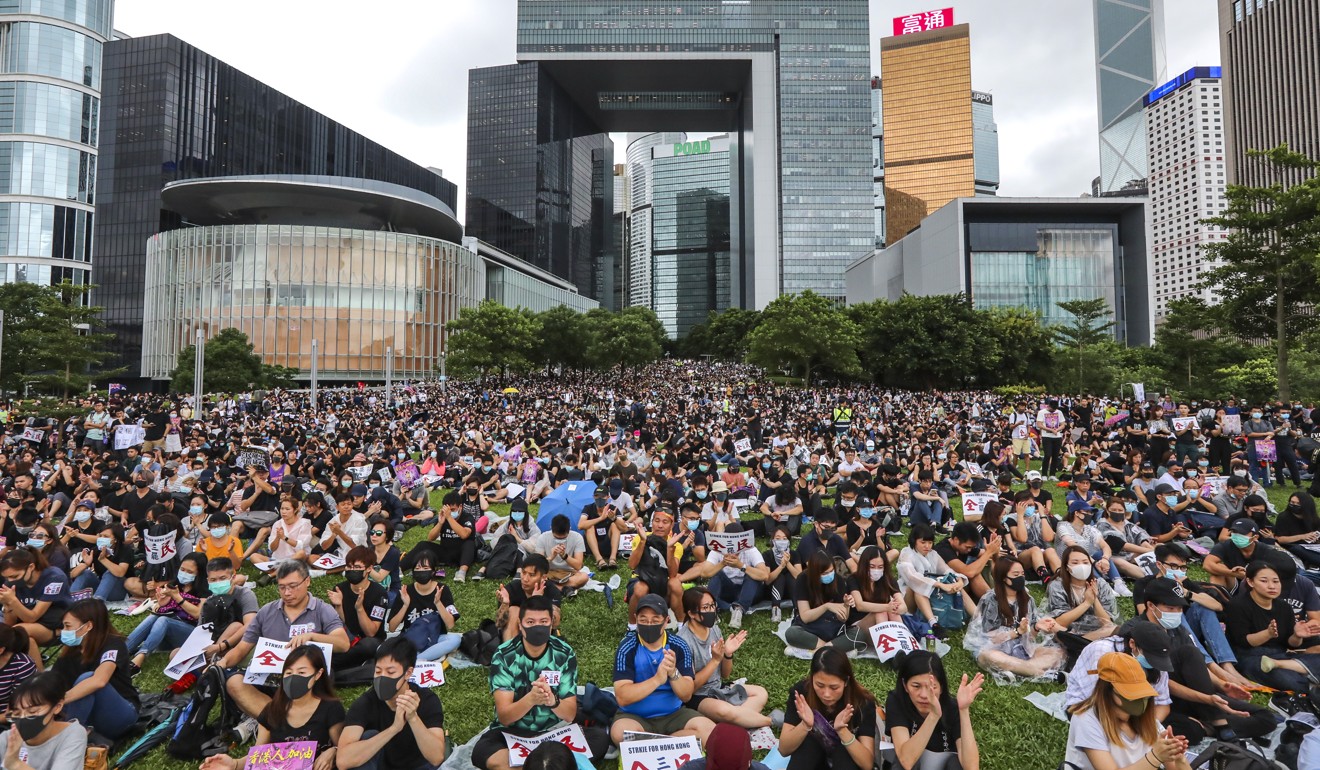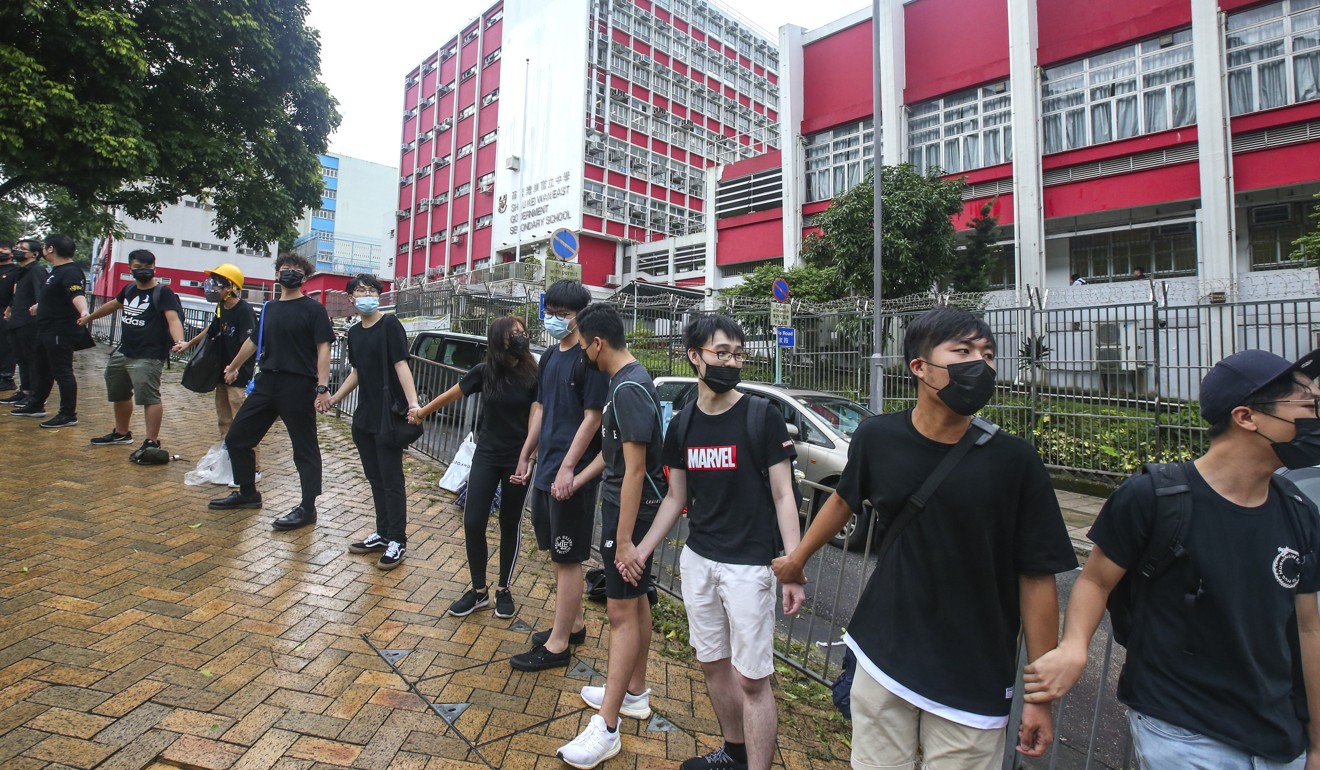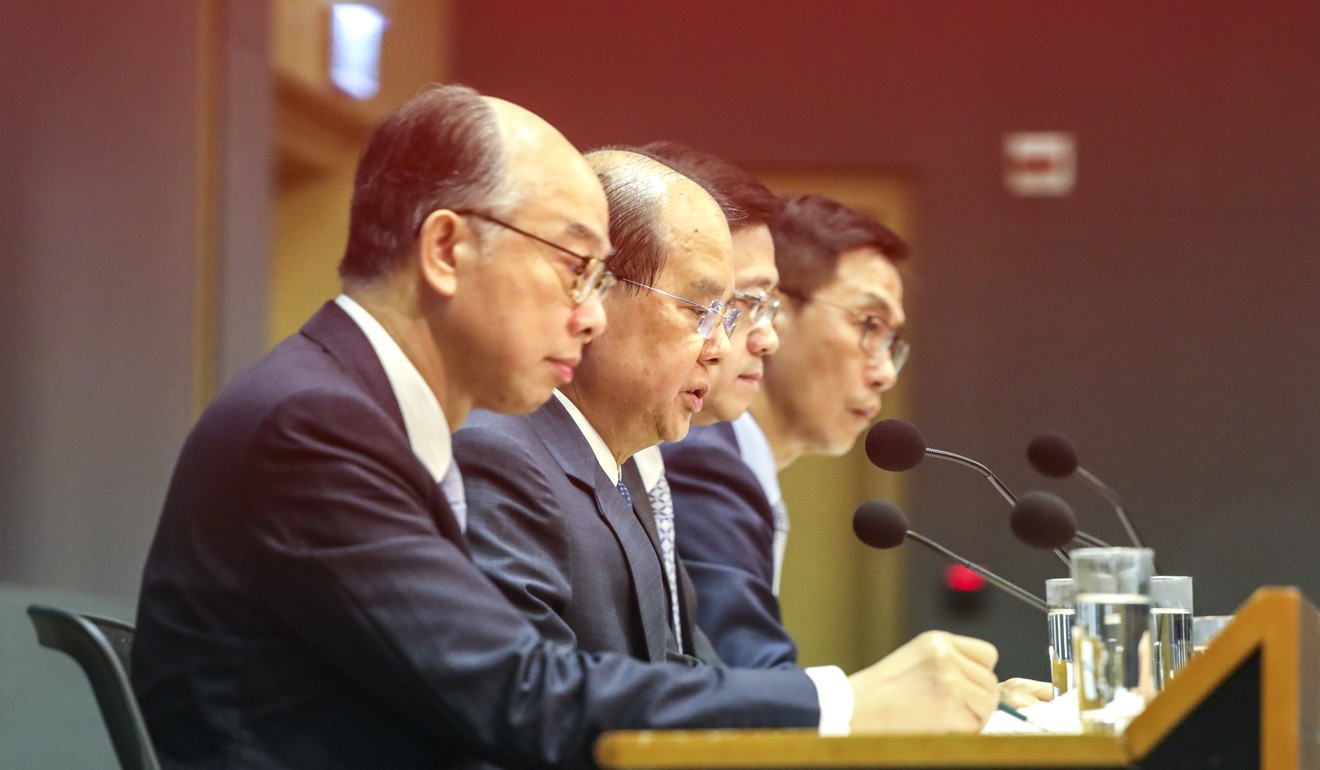
Hong Kong protests: defiant university students, school pupils and residents go on strike, piling pressure on government to meet demands
- Action held as police announced that 1,117 people had been arrested since anti-government protests erupted in June
- Protesters had threatened to paralyse the railway network as part of ‘non-cooperative’ movement, but were deterred by police patrolling stations
Defiant university students, school pupils and Hongkongers from all walks of life went on a citywide strike on Monday, giving the embattled government an ultimatum to meet their demands or face escalated protest action.
The strike was held as police announced that 1,117 people had been arrested since the anti-government protests erupted in June.
Eighteen face charges in Hong Kong court over clash with police
Police arrested four protesters on Monday morning at Lok Fu and Lai King stations for blocking platform screen doors to stop trains from leaving.
Officials also ramped up their rhetoric against escalating protest violence, with transport and housing minister Frank Chan Fan describing demonstrators’ actions over the weekend as “barbaric”.
The city’s No 2 official, Chief Secretary Matthew Cheung Kin-chung, left open the possibility of Lam’s invoking sweeping emergency powers to allow her to “make any regulations whatsoever” that she might “consider desirable in the public interest”.
“We are studying which laws could render help to the work of police and assist with their operation … We keep an open attitude about it,” he said.

“There are certain factors for our consideration. The use of laws must be lawful, rational and reasonable. It must be made in the best interests of Hong Kong in accordance with its actual situation.”
Transport minister Chan said a court injunction obtained to stop people protesting at the airport was “seemingly not working well” and the government would have to work on its strategy.

Separately, the Bar Association condemned protesters for defying court orders and obstructing operations at the airport and MTR stations, warning it would lead to a “descent into lawlessness”.
But the association also reiterated its calls for a complete withdrawal of the bill and the establishment of an independent judge-led inquiry into police actions.
Security chief defends police over weekend action against protesters in MTR station
The strike action started in the morning with six students in yellow helmets, goggles and masks kneeling in front of St Francis’ Canossian College, the Wan Chai alma mater of the city’s leader, urging the chef executive to meet all five demands, which she has rejected so far.

Pupils and alumni from Shau Kei Wan Government School, Shau Kei Wan East Government School and Salesian English School formed a human chain on a 650-metre slope leading up to the Island Eastern Corridor.
“We hope more students can be aware of the seriousness of the extradition bill,” said Form Six pupil Yannis Ho Tsz-yan, referring to the controversial legislation which would have allowed the transfer of fugitive suspects from Hong Kong to mainland China and other jurisdictions.
Vandalism at dozens of MTR stations over weekend, firm says
A school boycott rally co-arranged by youth-led group Demosisto at Edinburgh Place in Central drew 4,000 pupils from 230 secondary schools, despite the pouring rain, the organiser said.
Some students skipped classes for the entire day, while others streamed in at about noon after school finished early on the first day.

Demosisto vice-chairman Isaac Cheng Ka-long condemned what he called a climate of fear created by police officers standing on guard outside schools such as La Salle College.
Police said they were responding to residents’ concerns about safety, and left after checking the bags of alumni at the scene.
Thousands at rally to kick off university class boycott
“It takes an enormous amount of courage for students here to come out today. Many are here because of the unprecedented violence last weekend when officers beat up passengers at Prince Edward MTR station,” Cheng said.
He was referring to officers from the elite Special Tactical Squad storming into the station on Saturday night – police said they were going after radical protesters who were vandalising the premises and fighting with commuters, but they were in turn accused of indiscriminately beating people on a train.
Thousands of students from across the city held a mass rally at Chinese University to kick off a two-week class boycott.
A sea of protesters in black, many of them wearing masks and helmets, flooded the University Mall, a large open space on campus. Organisers said 30,000 took part.
Student representatives read out a joint statement, declaring: “We will carry on with our beliefs and continue our fight. Be it bullets, be it white terror, be it the totalitarian regime, whatever obstacles stand in our way shall never be enough to break our determination.”
Jacky So Tsun-fung, president of Chinese University’s student union, had a message for those calling the school an institution for rioters: “If going against an evil law and tyrannical rule gives us the name of rioters, we gladly accept.”
Political commentator Ma Ngok, an associate professor at the university, added his voice to support the students, saying on the stage: “You don’t know when you will lose your job for writing on Facebook or saying ‘Hongkongers, add oil’ a couple of times!”

Some protesters vandalised University MTR station, damaging ticket vending machines and turnstiles.
In another show of defiance, thousands of Hongkongers from all walks of life joined a separate rally that was held at the Tamar Park in Admiralty as part of the two-day citywide strike.
It was organised by representatives from 21 sectors and supported by the Confederation of Trade Unions. Organisers said 40,000 turned up.
How secondary school pupils are taking charge of own strikes
Yuen Hin, 25, a tutor who took the day off work, said he had been going to most of the protests and felt the local government no longer had the power to end the crisis under Beijing’s control.
As night fell, protesters occupied roads outside the government headquarters at Tamar, prompting police to use pepper spray to disperse them.

Around 200 protesters gathered outside Prince Edward station again to protest against Saturday’s police crackdown.
Demosisto’s Cheng, meanwhile, was assaulted by three men on Monday night on his way home. He suffered injuries to his eyes.
Looking back at Saturday’s protest chaos, police said radicals had hurled at least 100 petrol bombs at frontline officers, who responded with 241 rounds of tear gas, 92 rubber bullets, 10 sponge grenades and one beanbag round.

“Protesters lit a fire on the road in Tung Chung that reached almost three metres [nearly 10 feet] high,” said Mak Chin-ho, the assistant police commissioner in charge of operations .
“The violent actions are spreading like a plague. These people are out of control.”
Additional reporting by Joanne Ma, Sum Lok-kei, Gigi Choy, Christy Leung and Cannix Yau

